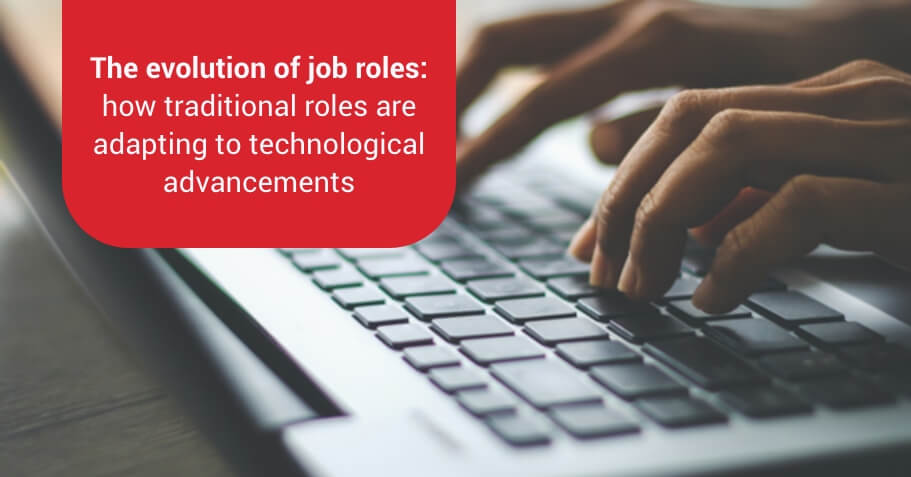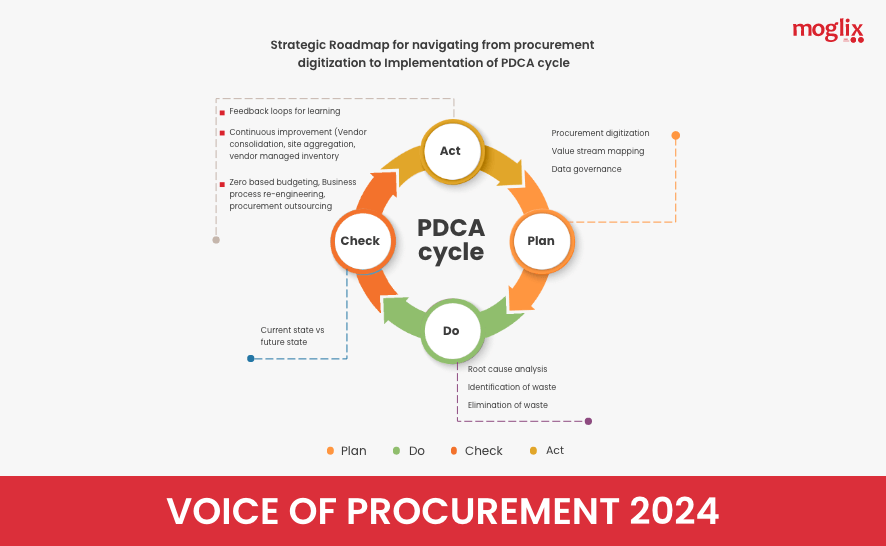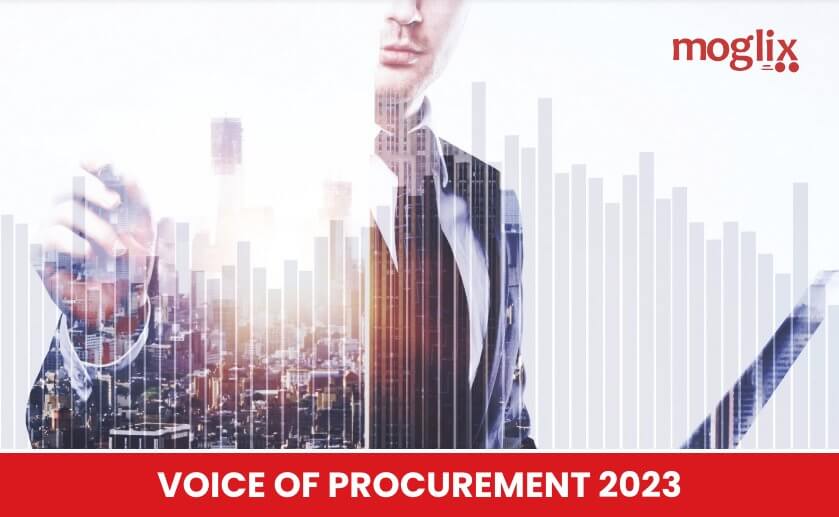The evolution of job roles: how traditional roles are adapting to technological advancements

The evolution of job roles: how traditional roles are adapting to technological advancements
Sandeep Goel, in an exclusive for YourStory, shared his insights on the evolution of job roles in response to technological advancements. He highlighted how traditional roles are transforming from reactive to proactive, driven by innovations like AI, IoT, and data analytics. According to Goel, technology is not only automating processes but also empowering professionals to make data-driven decisions, thereby adding more strategic value to their roles. As industries continue to evolve, Goel believes that embracing these technological shifts will be key to fostering a more dynamic and future-ready workforce.
Read MoreChampion for Diversity & Inclusion 2024

Champion for Diversity & Inclusion 2024
Date: 23rd October
Organizer: ISCM
About the event: Moglix has been recognized as a Champion for Diversity & Inclusion 2024 by the Institute of Supply Chain Management (ISCM)!
At Moglix, we’re committed to cultivating an environment where diversity sparks innovation and inclusion builds resilience. This recognition strengthens our resolve to create a workplace where everyone feels valued, empowered, and inspired.
Voice of Procurement: Analysis and Insights on Supply Chain Strategy for 2024

Voice of Procurement: Analysis and Insights on Supply Chain Strategy for 2024
Decoding the Shift Towards Lean Procurement in 2024

What’s Unique About Volume 2 of Voice of Procurement?
The key takeaway emerging from volume 2 of the whitepaper is that lean procurement is the point at which continuous cost optimization meets continuous improvement.
Continuous cost optimization across fortnights, months, financial quarters, and financial years can be achieved by fulfilling two necessary conditions:
- The right data governance to identify gaps between the current and future states of value stream maps .
- A digital supply chain skeleton that can enable agile feedback loops for procurement teams to set sail on the path of continuous improvement or kaizen through progressive PDCA cycles
What’s Included in Volume 2 of the Voice of Procurement?
Volume 2 of the Voice of Procurement brings 7 insights that tell how CXOs in procurement are responding to 7 critical questions in 2024 Vs 2023.
Each such chapter contains:
✅ a chapter summary capturing the trend
✅ takeaways for CXOs on procurement & supply chain
✅ user recommendations for procurement leaders and their teams
✅ actionable frameworks for CXOs in procurement to get started on continuous improvement
From Continuous Improvement to Continuous Cost Optimization: The Rise of Lean Procurement
From work in process, inventory levels, and time to costs, the science of doing more with less is catching up with the community of procurement leaders and practicing supply chain managers is like never before.
The job of engineers is to make a product or to build an infrastructure project. It is the job of the procurement people to enable its make or build at the optimum cost.
But continuous cost optimization across months, financial quarters, and financial years calls for more than just negotiating with suppliers for the best price discovery. It calls for lean procurement.
Thoughts on Research Behind the Whitepaper
The second edition of our survey in 2024 featured 130 respondents from a diverse cross section of industry verticals in the manufacturing sector and featured the same set of 7 questions that we had asked last year to assess the shift in perspectives of the procurement community.
At the end of the data collection and analysis exercise, we have got 7 takeaways, analysis and insights on questions ranging from a holistic view of the supply chain, ESG compliance, digital procurement & supply chain transformation and procurement outsourcing.
Every day, CPOs and their teams from 1000+ manufacturing enterprises across the U.S, Mexico, the U.A.E, Singapore, and India plug into Moglix Business’s procure-to-pay operating system to continuously improve their performance. Get in touch with a Moglix Business procurement expert to know you can get started on the path to continuous cost improvement.
Voice of Procurement: Analysis and Insights on Supply Chain Strategy for 2023

Voice of Procurement: Analysis and Insights on Supply Chain Strategy for 2023
Insights on Supply Chain Strategy and Procurement Digitization for Indian Manufacturing in 2023
About the Release of the Whitepaper
2023 holds significance for the Indian manufacturing sector and the Indian economy for multiple reasons. 2023 marks India’s Presidency of the G20, begins the countdown on our pledges on net zero emissions at COP26 and COP27 by 2070, and marks the beginning of the end of the COVID19 pandemic. Above all 2023 resumes the journey of CXOs in Indian manufacturing towards a USD 5 trillion GDP. Amid all the market dynamics, massive fiscal expansion by the Government of India under the aegis of the Union Budget for policies like the National Infrastructure Pipeline, PM Gati Shakti, Make in India, Bharat Mala, and Sagar Mala, CXOs need to answer to three questions to simplify procurement. These questions relate to choices of:
- Supply chain strategy
- Procurement digitization and
- Output metrics
for the line items that they procure.
This whitepaper is aimed at enabling visibility into what supply chain and procurement leaders are prioritizing in 2023.
Thoughts on Research Behind the Whitepaper
Our first whitepaper “Voice of Procurement: Analysis and Insights on Supply Chain Strategy in 2023” is a simple statistical inferencing exercise that brings out which pain point has garnered how many pocket book votes in the true spirit of free market democracy. We reached out 100 respondents from a wide diversity of our enterprise customers to seek their responses on questions pertaining to their priorities for 2023. We analysed their responses to arrive at what’s the priority that gets maximum votes and thereby decoded the trends in quantitative terms.
Audience of the Whitepaper
The whitepaper is aimed at procurement and supply chain leaders of the Indian manufacturing supply chain ecosystem. The procurement and digital supply chain transformation trends that we have identified represent the collective responses and priorities of the following industry verticals and sub-sectors:
1. Automobile
2. Infrastructure EPC
3. Electrical Switchgear
4. Tyres
5. Metals & Mining (Non-Ferrous and Iron & Steel)
6. Wires & Cables
7. Textiles
8. Pharma
9. Chemical
10. Renewable Energy (Solar PV, Hybrid)
11. Consumer Electronics
12. Cement
13. FMCG
14. Footwear
15. Real Estate
At the end of our analysis, we leave you with a simple decision-making enabler for choice of supply chain strategy and procurement technology for diverse categories of line items.
Contents of the Whitepaper
The whitepaper contains insights on:
- Cost optimization as a procurement priority for manufacturers in India in 2023
- Supply chain substitutions for fulfilment of the mandate for ESG compliance
- Visibility into the supply chain and metrics for exhaustive supplier capability mapping
- Value reengineering methods for enterprises and suppliers to scale up capacity
- Procurement digitization essentials for business continuity and de-risking
- Integrated procurement digitization models such as P2P cycle digitization
- Kraljic matrix for choice of supply chain strategy and procurement technology for line items
Procurement Excellence 10th Edition Summit & Awards 2024

Procurement Excellence 10th Edition Summit & Awards 2024
Date: 18th October
Organizer: UBS Forums Pvt. Ltd.
About the Event: Mr. Rupesh Kharbanda, Vice President at Moglix, recently spoke at the Procurement Excellence 10th Edition Summit & Awards 2024 by UBS Forums Pvt. Ltd. in Bangalore! The session highlighted: The power of Transformational Technology in shaping procurement processes. Strategies for Building Resilient Supply Chains.
CXO Leaders Roundtable

CXO Leaders Roundtable
Date: 18th October,2024
Organizer: ObserveNow
About the event: Mr. Shiva Nand Singh, Director at Moglix, recently shared his expert perspectives on “Building Smarter Applications: The Role of GenAI in Product Evolution” at the CXO Leaders Roundtable, organized by ObserveNow. 💡🤖The event brought together industry leaders and innovators to explore how Generative AI (GenAI) is reshaping the future of SaaS applications.
Tech Unicorns in India

Tech Unicorns in India
Date: October 7th
Organizer: Harward Business School
About the event: Mr. Rahul Garg, Founder & CEO of Moglix, recently presented the India Unicorn Report from the Confederation of Indian Industry, alongside the journey of Moglix, to MBA students at Harvard. India’s rapid pace of innovation is remarkable, with our startups showcasing world-class potential. It’s fascinating to observe how global leaders often lag in terms of dynamism and execution speed within India.
Delhi Supplier meet

Delhi Supplier meet
Date: September 27th
Organizer: Moglix
About the event: We recently hosted the Moglix Supplier Meet – Daksh in Delhi, uniting our valued suppliers for a day of networking, sharing insights, and exchanging feedback. Mr. Chaitanya Kulkarni, our Director, showcased our latest initiatives designed to empower our suppliers and facilitate mutual growth. At Moglix, we know our suppliers are critical to our success. Your expertise and creativity play a vital role in delivering outstanding products and services to our customers. We also celebrated the impressive achievements of our suppliers—congratulations to our esteemed award winners.
Together, we are not just scaling businesses; we are building a vibrant ecosystem where everyone thrives. Thank you for being a crucial part of the Moglix journey.
CII WR IWN : 9th Edition of WomeNation Summit Western Region

CII WR IWN : 9th Edition of WomeNation Summit Western Region
Date: September 20th
Organizer: CII
About the event: Ms. Jigyasa Kishore (she/her), VP of Moglix, recently led a discussion on “Igniting Innovation” at the 9th Edition of the WomeNation Summit, organized by the CII Western Region Indian Women Network in Mumbai. This engaging session highlighted the transformative power of entrepreneurial thinking in our rapidly evolving world. Panelists shared their experiences and strategies for fostering creativity, tackling challenges, and turning innovative ideas into reality. Discover how these trailblazers utilize their unique perspectives to inspire change and influence markets.
Bangalore CPO Meet 2024

Bangalore CPO Meet 2024
Date: September 20th
Organizer: GainSkill
About the event: We recently held a successful CPO Connect in Bangalore on “Navigating the Future of Procurement: Leveraging Aggregator Ecosystems and Adaptive Leadership for Strategic Advantage,” in collaboration with Gain Skills Business Media Pvt Ltd.! Mr. Rupesh Kharbanda, our Vice President, shared his expertise on enhancing strategic sourcing through aggregators. It was also a fantastic opportunity to network with CPOs from various sectors!
